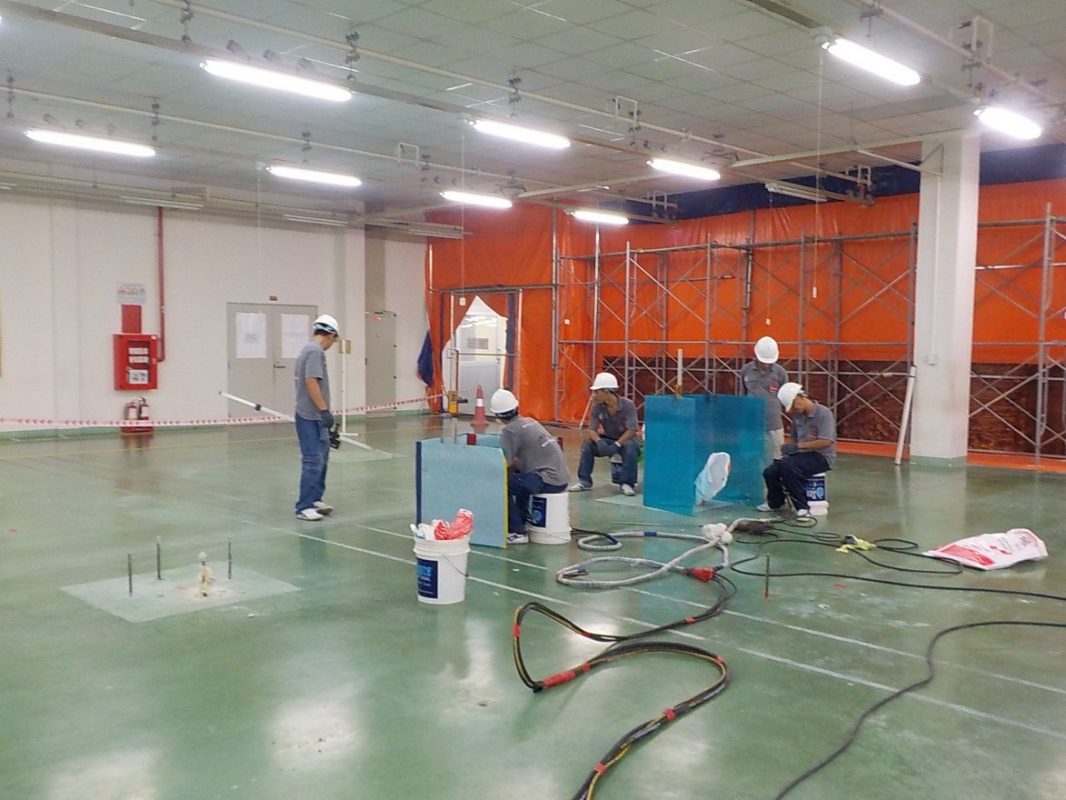Which floor raising method achieves high efficiency and saves costs? Surely, that is a question that many households and investors are interested in. Are cement, soil, EPS foam, rubble, XPS foam, sand, and cool bricks good for the floor? To answer this question, please follow the article below from Uretek Vietnam!
When does a project need to raise the floor?
Raising the floor (raising the foundation) is a construction method to improve the quality and height of the floor. There are many reasons for raising the floor, some of which include the following:
- There are changes in design and space in the house, so it is necessary to perform foundation restoration.
- Constructions with foundations lower than the new road surface cause unsightliness and hinder movement.
- In places where heavy rain and flooding often occur. When water cannot drain through the system, it can easily overflow into the house, weakening the foundation. Raising the foundation not only improves the foundation but also helps the building increase a certain height, preventing water from flooding into the house.
- For projects with large areas (commercial centers, apartments, schools), rental buildings, they often need to be renovated.
So, which floor raising solution is suitable to solve the above problems?
Top 3 popular floor raising measures
How are these materials suitable for raised floors? Here are some features of each product:
EPS foam
- Available in sheet and block form, size 1000 x 2000 mm, cutting thickness according to each project’s requirements.
- Density ranges from 7 – 40 kg/m³
- Low hygroscopicity coefficient of 2 – 6% Waterproof, anti-fungal and anti-mold.
- Able to absorb vibrations and disperse force to many locations
XPS foam
- Compressive strength is 226 Kpa. Foam has high mechanical hardness and good bearing capacity.
- Foam density 35, 38, 40 kg/m³
- Very high durability from 40 – 50 years.
- The water absorption ratio is only about 1.2%. Less water absorbent, helps prevent moisture and mold.
- Has the ability to resist vibration and disperse impact forces
Cool tiles
- High hardness, density 50 – 60 kg/m3
- Dimensions 1200 x 2440 mm, weight: 1.2 – 1.6 – 2 – 2.4 kg/m2
- Dehumidification rate ≈ 1.3%. Cool bricks have high self-waterproofing ability, do not absorb water, and do not dissolve in water
- High compressive strength >140,978 k.N/m2, good force resistance.
- The lifespan of the project can be up to 50 – 60 years
Instructions for constructing floor raising measures
Foundation plating needs to go through some basic steps as follows:
- Step 1: Survey the current status of the project.
- Step 2: Measure and calculate the height of the foundation to be raised.
- Step 3: Cut EPS, XPS foam panels or bricks according to the calculated density, size and thickness.
- Step 4: Prepare construction materials and tools such as: formwork, steel, cement.
- Step 5: Clean the surface, cut flat and waterproof (if necessary).
- Step 6: Install the formwork system.
- Step 7: Knit the lower layer steel floor.
- Step 8: Arrange the foundation material, ensuring it is tight and neat.
- Step 9: Then, place a layer of steel floor on top.
- Step 10: Pour concrete onto the surface to fix and ensure aesthetics.
- Step 11: Cleaning, acceptance and handover of the project
How cost-effective are floor raising measures?
Firstly, all three products of EPS foam, XPS foam, and cool bricks are much cheaper than traditional materials such as sand, soapstone, wood, and soil.
Second, thanks to their light density, the transportation and construction of these materials is quite quick. Helps save time and labor costs.
Third, besides the foundation, foam and cool bricks all have quite good thermal insulation properties. Helps the building resist heat in the summer and keep warm in the winter. From there, save some energy consumption.





